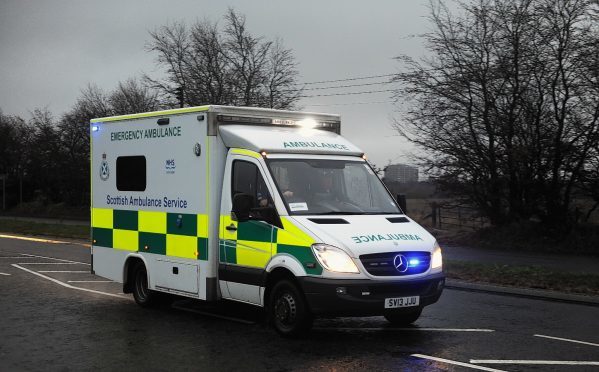Hard-pressed crews say a brand new ambulance has sat unused for three months – because they have still not been trained to drive it.
Fed-up staff say they have been forced to leave it “abandoned” in a car park even as the north-east faces a crisis in emergency coverage.
The “well-worn” vehicles now in service from Elgin have 222,000 and 170,000 miles on the clock. The Forres vehicle has done 236,000 miles and is also in need of replacement.
But unlike the existing ambulances, the new arrival has automatic transmission and none of the crews can yet take it out on the road.
Instead the replacement, which is still not kitted out with vital life-saving equipment, “has been abandoned at the back of Dr Gray’s in the dentists’ car park”, one paramedic said.
“Nobody has been trained to drive automatic, and we have been given no idea as to when that training might take place,” he revealed.
“It’s such a farcical situation that it’s almost funny, but things like this cause real frustration.”
The incident emerged as staff and unions expressed fears that a severe lack of emergency vehicles is putting lives at risk across the north-east.
Critics say new figures show paramedic crews are stretched to breaking point by having to perform hundreds of “non-emergency” hospital transfers every year.
The threadbare state of the region’s service often means vast areas have no ambulances to respond to people in distress, they warn, likening the situation to a “black hole” spreading across the north-east.
Moray’s biggest town, Elgin, is served by only one vehicle for 16 hours of each day.
But it is forced to transfer more than 700 patients between Dr Gray’s Hospital and Aberdeen Royal Infirmary (ARI) every year – 75% of whom require no treatment en route.
Elgin crews spent a cumulative total of six months of 2015/16 ferrying patients down the A96, with each journey requiring at least four hours.
After dropping people off, the ambulance is commonly used to respond to emergency calls from Aberdeen’s surrounding towns and villages – leaving Elgin unmanned.
Paramedics say this causes a “domino effect” where vehicles from places such as Banff and Huntly are called to treat casualties in Moray, creating risks in their own unattended patches.
And north-east crews say the problem is compounded by increasingly being summoned to casualties sometimes 60 miles outside of their area, before then transporting casualties to ARI.
Last July, a Banff crew responded to a 999 call about a patient with chest pains in Lossiemouth – and took 47 minutes to arrive.
In December 2015, 21-year-old Bryan Addison died after being hit by a car while walking along the A941 Elgin to Lossiemouth road.
The ambulances sent to the scene had to travel from Dufftown and Buckie as local crews were busy.
And last March, a Tomintoul ambulance took 27 minutes to arrive when 16-year-old cyclist Keiran McKandie was killed in a collision with a car on the B9010 road outside Elgin.
One paramedic likened busy periods where numerous ambulances are in use to an ever-expanding “black hole”, capable of swallowing up entire chunks of the north-east.
Elgin is served by one ambulance for 24 hours, and a second is deployed only between 2pm and 10pm.
The number of patient transfers the town’s stretched crews are ordered to perform has doubled over the last five years, as beds and services have been reduced at Dr Gray’s.
Although the majority of transfers are to Aberdeen, paramedics are also tasked with driving patients to Inverness, Dundee, Edinburgh and Glasgow.
Milne Weir, the general manager of the SAS north division, said there had already been “significant improvements in the Grampian area in response to recent feedback”.
“We are continuing to monitor demand and review performance to ensure patients get the quickest and most appropriate resource.”
The response included recruiting 30 new paramedics, a hospital ambulance liaison officer (Halo) at Dr Gray’s to reduce turnaround times, major trauma kit for ambulances and a “lower acuity” vehicle in Elgin and Banff to ease the load.
“The Grampian area will also benefit from a number of new accident and emergency vehicles as part of the national fleet replacement programme,” he added.
